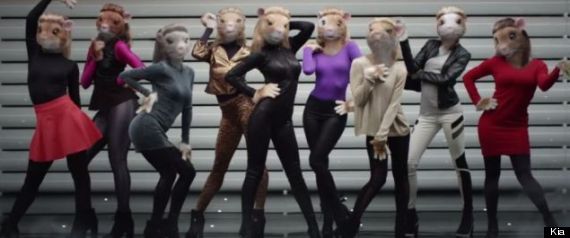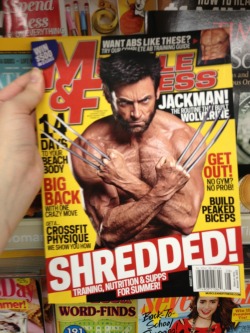At face value, the purpose of these images is to sell a product. However, the pattern of objectification is also selling an idea; the idea is that the companies producing these images have the solution to our problems, which is ourselves. Advertisements are basically saying, "You don't look like this but with our product, you can!" This is problematic because the reality is that mostly everyone will never look like the men and women in advertisements, so it turns into a cycle of buying more and more products to achieve something that can never happen; it's a major win for the companies that produce these ads.
The women in ads are often depicted as being an object of lust. They often have something that regular women do not have whether it be long, straight hair or big breasts. Women in ads are also depicted as being passive and complacent, which can give girls that idea that being perfect includes becoming an object to be admired instead of being admired for their strengths and talents. "Men look at women. Women watch themselves being looked at...Thus she [woman] turns herself into an object- and more particularly an object of vision: a sight" (Berger 47).
 |
| Kia commercials featuring dancing hamsters is one thing. Giving them female human bodies is a creepy thing. Source: The Huffington Post |
 |
| Hugh Jackman for women... |
 |
| ...and Hugh Jackman for men Source:themarysue.com |
Race is another issue that is faced in advertising. "To stare at the television, or mainstream movies, to engage its images, was to engage its negation of black representation" (hooks 117) Similar to how women cannot achieve the levels of perfection of ad models, people of color cannot achieve the advertisements' idea of beauty because most of the models are white. The representation of people of color in ads are similar to their representation in films and television. People of color in ads are often used as "tokens," or a way for companies to say that they are representing non-white people while still prominently featuring white models. It is not enough to include one black woman in a group comprised of 5 white women when in real life that group would consist mostly of other women of color. It no longer becomes representation, it becomes pandering. The lack of race representation leads people of color to believe that they will not be beautiful if they are not white and it is especially difficult for them to achieve something like that.
 | |
| In this before and after ad for Dove,ere is an implication that black skin is dry or dirty. Source: today.com |
The best way to flush out these images of simulated perfection is to first educate the public that this is a real thing. Many people refuse to believe things if they cannot see it for themselves. Show them the same images that they have always seen but show it to them in a critical matter. Ask them what they see wrong with it then tell them what is wrong with it if they cannot see it. Once an understanding is established, then they can pass the information along to their own friends.
The next thing to do is to establish agency and use it to spread the message. The Internet has made it much easier for average people to get the messages across to wider audiences. Platforms like Twitter and YouTube have been especially important in many modern activist movements. For example, the #blackout event that occurred a few weeks ago featured black people embracing their own beauty through selfies. It spread through Twitter, Tumblr and Instagram and it showed the world that "beauty" does not have to mean "white beauty." More movements like #blackout have the potential to change the world's views on advertising.
Works Cited
1.) Berger, John. "Ways of Seeing". London: British Broadcasting, 1973. Print.
2.) Hooks, Bell. Black Looks: Race and Representation. Boston, MA: South End, 1992
3.)Kimmel, Michael Scott. Misframing Men: the Politics of Contemporary Masculinities. Rutgers University Press. 2010
No comments:
Post a Comment